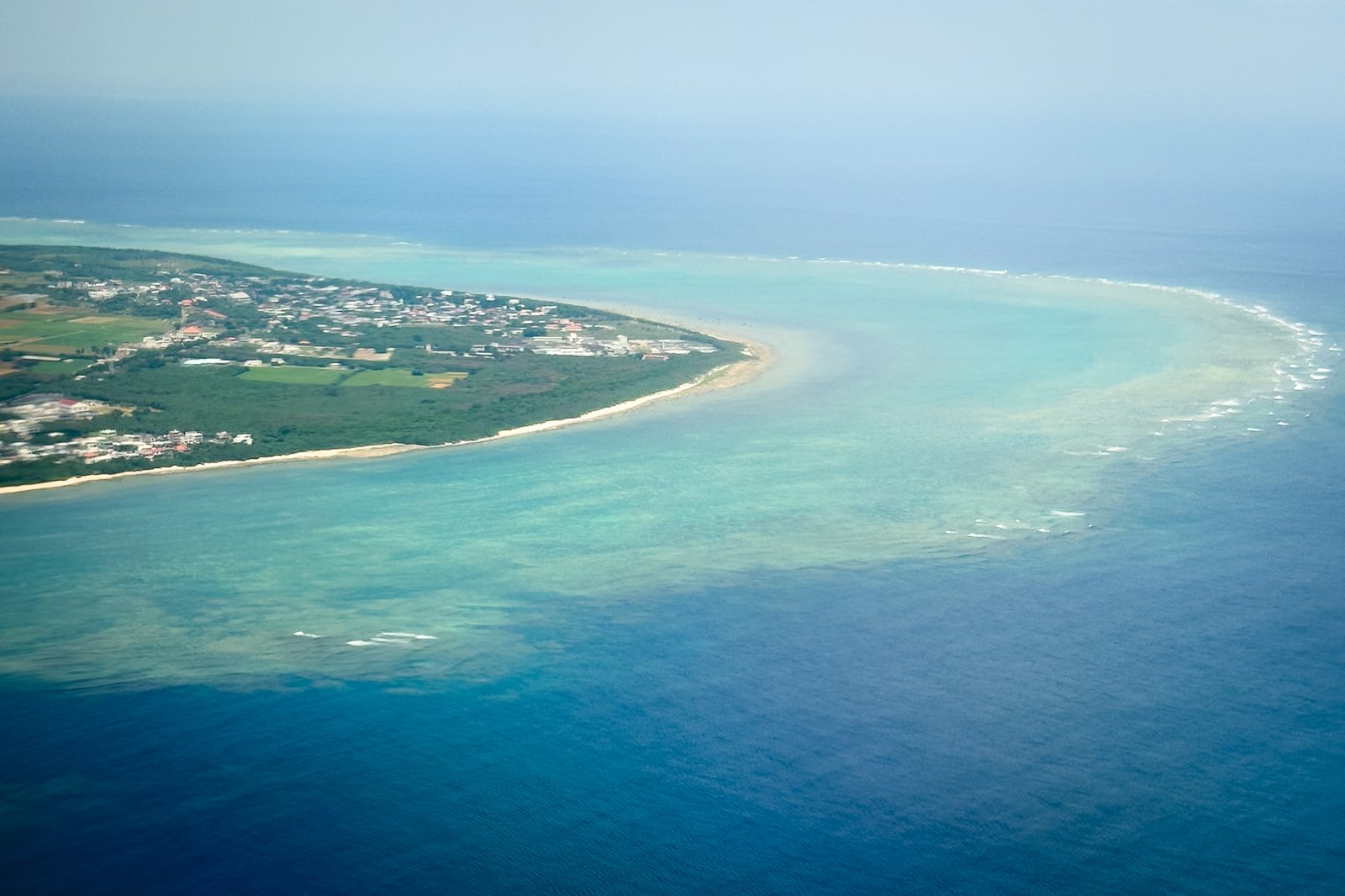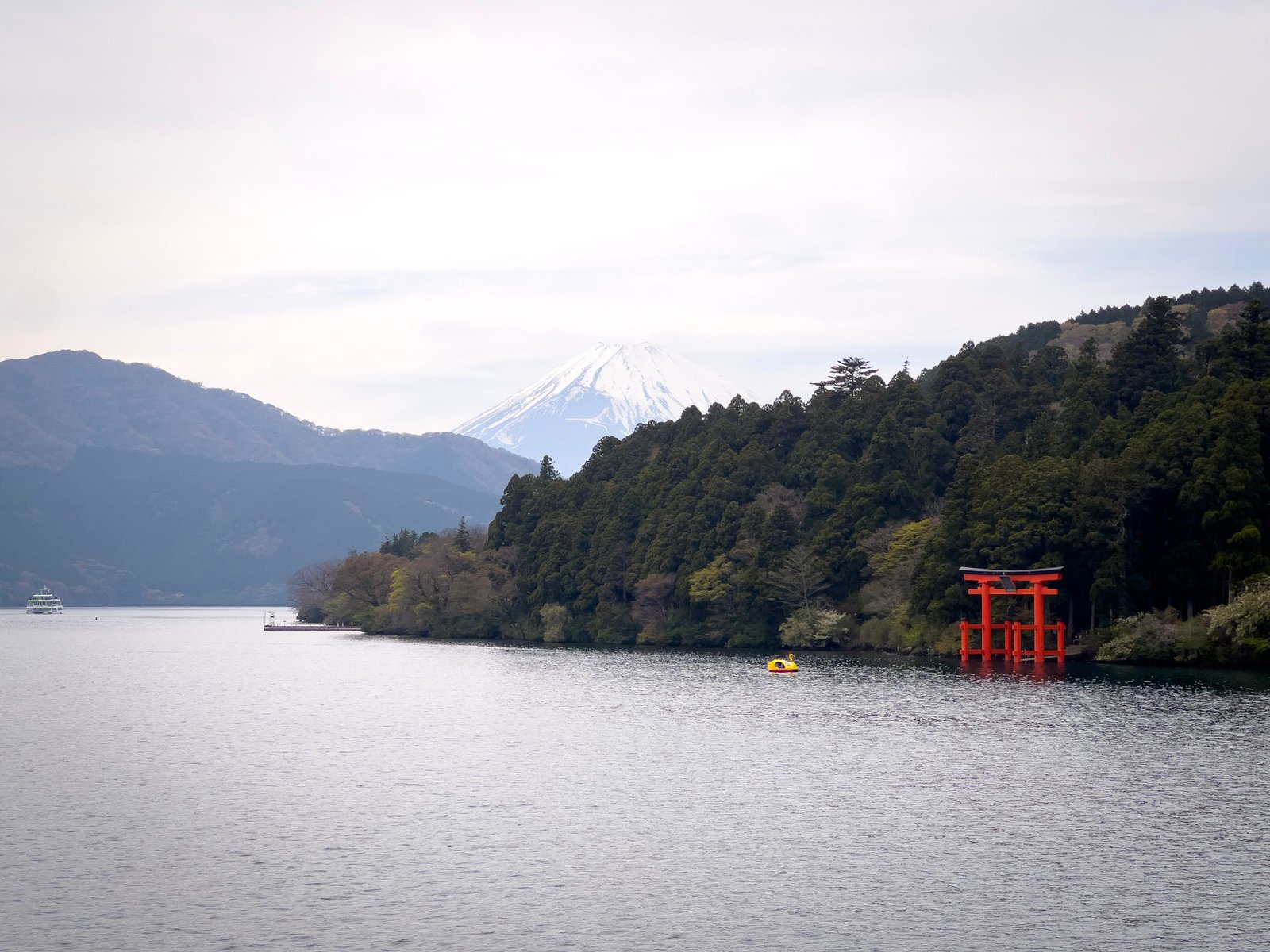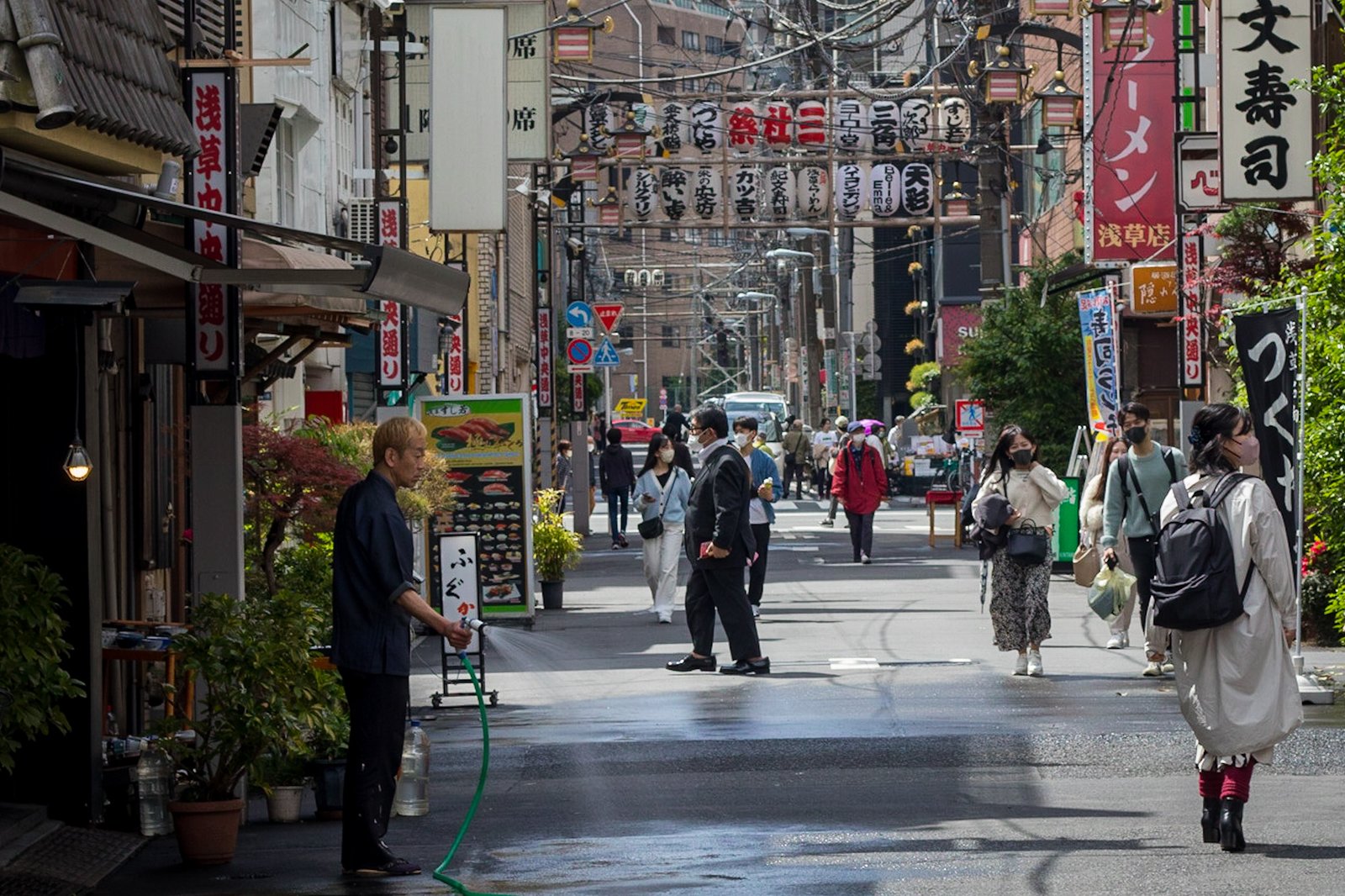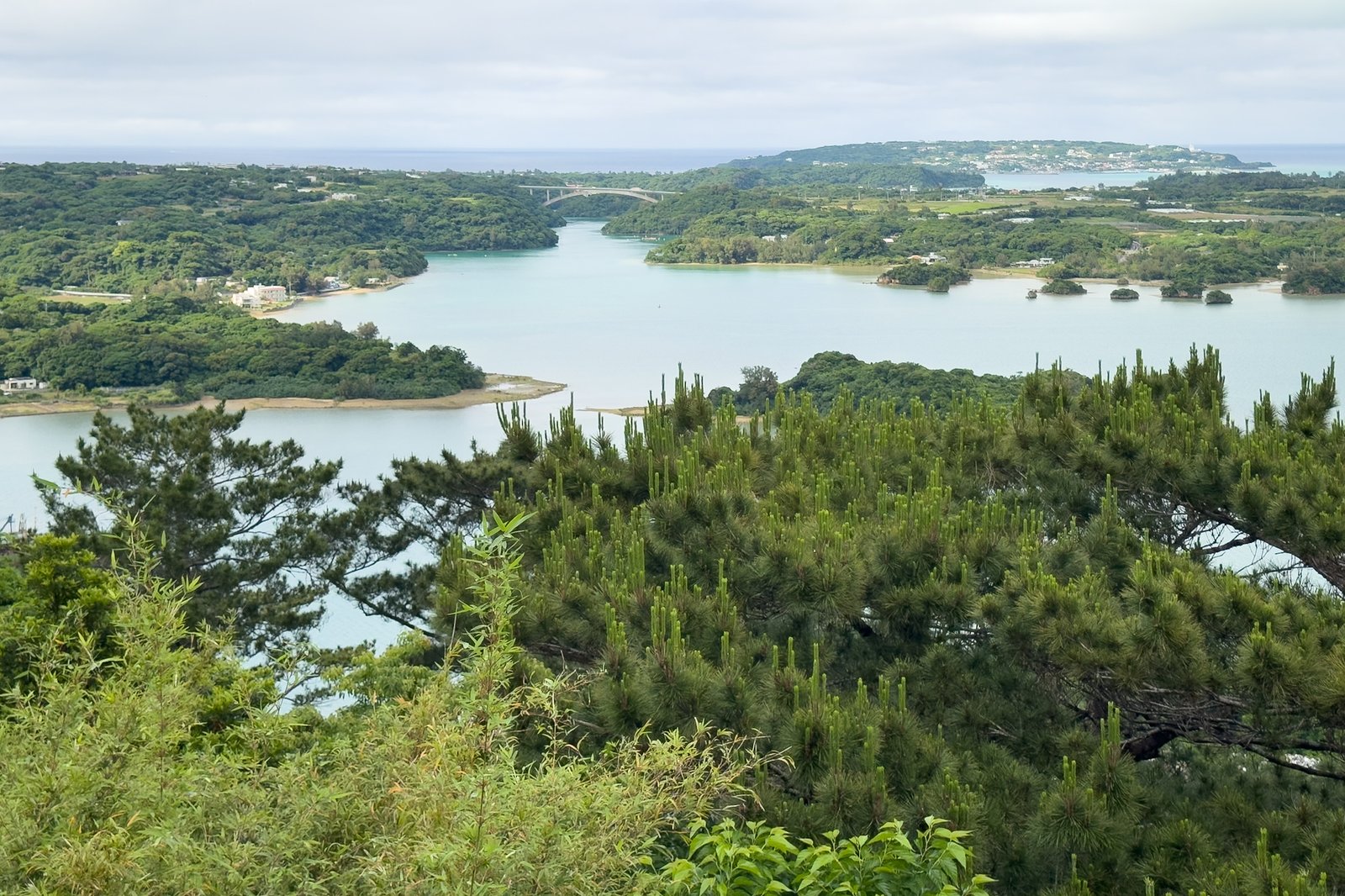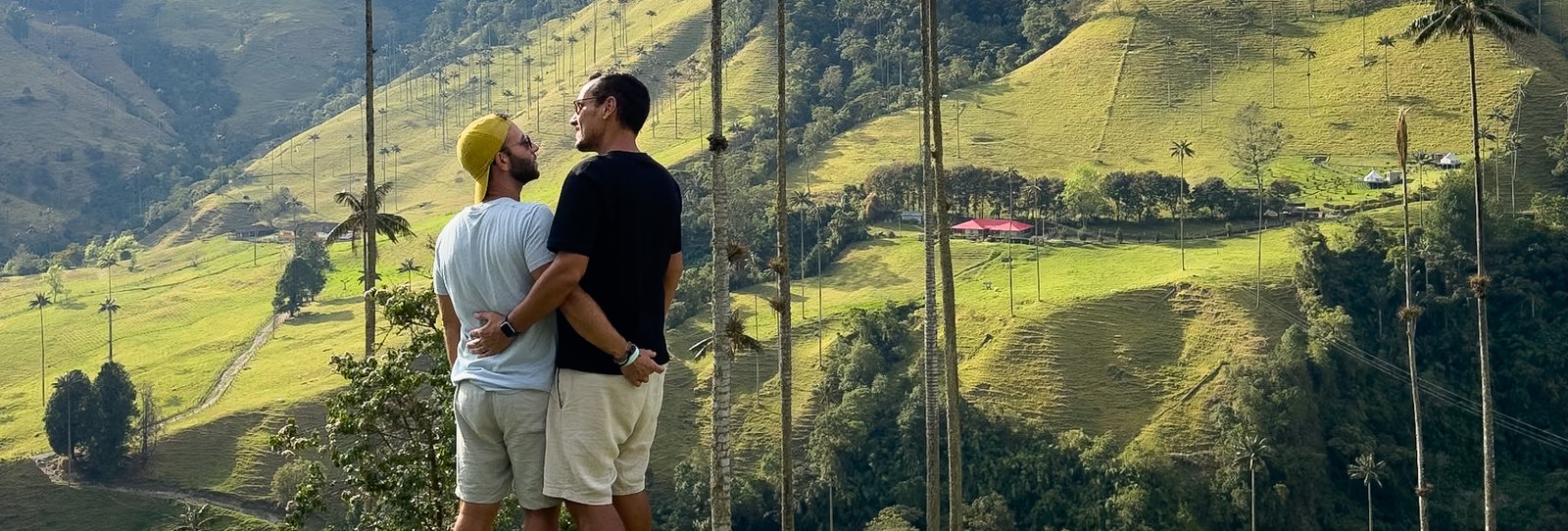If you’re planning a trip to southern Japan and want to know what to do in Ishigaki, stick around. This island was one of the biggest surprises of our last adventure. We arrived in Ishigaki after a few amazing days in Okinawa — the flight is super quick, less than an hour. This island was part of that off-the-beaten-path Japan we really wanted to explore. And since it’s also the perfect starting point to visit other islands in the Yaeyama archipelago, we decided to stay five days. The plan? Visit two islands by boat, rent a car to explore Ishigaki at our own pace, and save the last day just to enjoy the city without any rush.
If you’re also thinking about including Ishigaki in your itinerary, here you’ll find our Ishigaki itinerary, day by day, with practical tips and suggestions on what to do in Ishigaki to make the most of this wonderful island — no stress, plenty of time to enjoy everything properly.
Table of Contents
Why Ishigaki is so special
Ishigaki is known for its white sand beaches, crystal-clear waters, and amazing coral reefs. But there’s more to it — this island has a special energy, a mix of Okinawan culture with tropical landscapes and a relaxed vibe that makes you want to stay. For those who love nature, good food, and avoiding crowds, it’s a true paradise.
Where to stay in Ishigaki
If you haven’t decided where to stay in Ishigaki yet, we have a guide to the best accommodations in Ishigaki — from sea-view resorts to more affordable guesthouses. Our tip? Stay near the port or downtown so you’ll have everything within reach and make boat trips easier.


Check out our complete Ishigaki accommodation guide.
Do I need to rent a car to explore Ishigaki?
If you want to properly explore the island, renting a car is pretty much essential. Public transportation does exist, but it’s limited and doesn’t reach many of the most beautiful spots — like hidden beaches or incredible viewpoints.
We rented a car for just one day. We picked it up in the morning and returned it by the end of the day. Since we booked last minute, there were no cars available on the usual platforms like Klook or DiscoverCars, so we got one from a local rental company instead. It worked out just fine. Don’t forget that you’ll need an international driving permit that follows the conventions accepted by Japan.
Pro tip: if you can, return the car at the airport the next day — that way you avoid having to take a bus or taxi there, which can be a hassle (and expensive).
How to get from Ishigaki Airport to downtown
You have three options: bus, taxi, or Didi (an app similar to Uber). We chose the bus — much cheaper and pretty direct. If you have the time and don’t mind waiting a bit, it’s definitely worth it.
Islands you can visit by boat from Ishigaki
One of the best things about staying in Ishigaki is being able to take day trips to other amazing islands in the Yaeyama region. They all have regular ferries departing from the city’s main port. This is definitely an activity to add to your list of what to do in Ishigaki.

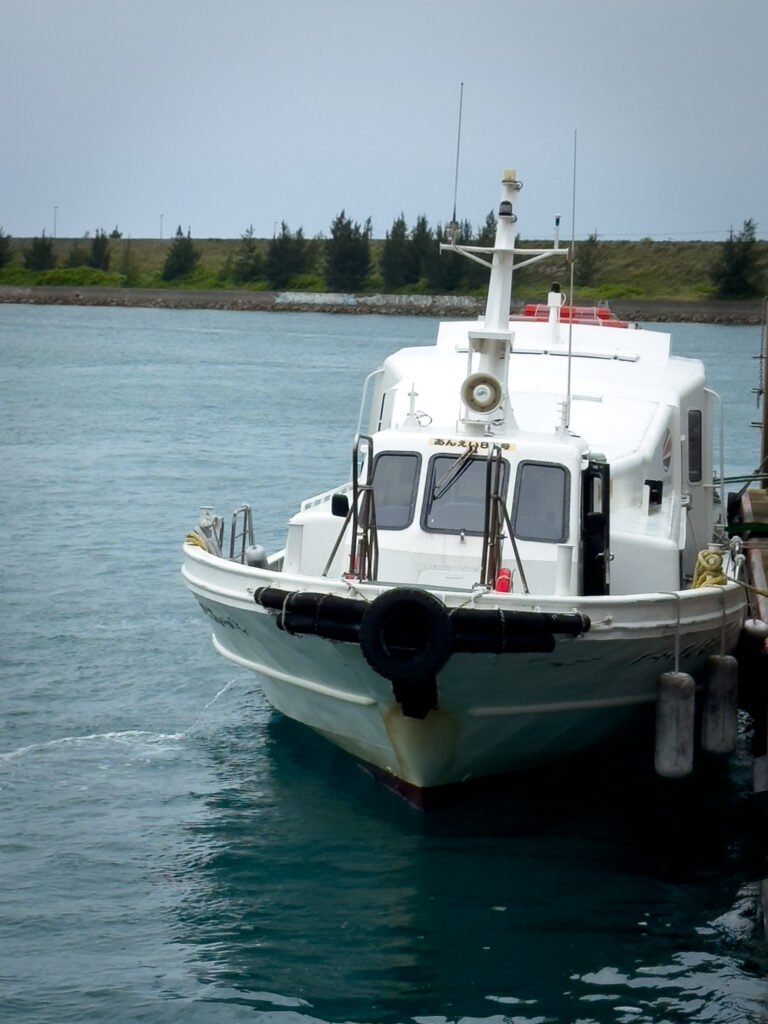
Here’s a table with the most popular islands, average travel times, and what you can expect from each:
| Island | Ferry Time | What to See/Do | Ticket Link |
|---|---|---|---|
| Taketomi | 10 min | Traditional village with red-roofed houses, white sand streets, and water buffalo | See timetables |
| Iriomote | 40-50 min | Wild nature, trails, mangroves, and rivers — perfect for adventure lovers | See timetables |
| Kohama | 30 min | Quieter, with good beaches and nice resorts | See timetables |
| Hateruma | 1h30 | Japan’s southernmost island — great for stargazing and deserted beaches | See timetables |
5-Day Ishigaki Itinerary
Day 1 – Arrival and Ishigaki Beef
On the day we arrived, we had only one thing in mind, right at the top of our Ishigaki to-do list: to try the famous Ishigaki beef. And we wasted no time. With no big plans, we searched for a specialized restaurant and ended up finding 焼肉 おおつか (Yakiniku Ootsuka). It was one of those experiences where you just know you’re in the right place.
Each table has its own grill, Korean BBQ style, but here the true star is the beef. There are several cuts and quality levels, but we went for a more affordable option and had zero regrets — it was simply divine.


Yakiniku literally means “grilled meat” and it’s a traditional Japanese way of cooking different kinds of meat and vegetables on a grill set right at the table. In Ishigaki, they use the famous local beef, known for being super tender and full of flavor.
It was a delicious way to kick off the trip and take our first deep dive into the local food culture.
Day 2 – Trip to Taketomi Island
For the second day of our 5-day Ishigaki itinerary, we decided to explore one of the nearby islands — Taketomi. And it was absolutely worth it.
This small island preserves the atmosphere of traditional Okinawan villages: red-tiled houses, white sand streets, and stone walls. It’s like stepping back in time.


We caught the ferry around 11 a.m. (there are boats almost every hour), and the trip takes about 15 minutes. When we arrived, we looked for a bicycle rental shop. The ones closest to the port were either sold out or required you to speak Japanese… We ended up walking about 15 minutes to the village, where a super friendly local helped us find a shop where they spoke English and were super easygoing. We paid around 1000 yen for 2 hours, plus 500 yen for each extra hour. The idea was to explore the village and take a ride to the beaches.


During our ride, we stopped at a small snack bar run by a lovely lady — the HaaYa Nagomi-Cafe. It’s near the Nagomi Tower, one of the tallest structures on the island. But here’s the secret tip: the café has an observatory at the top, even higher than the tower, offering a breathtaking panoramic view!
With our bellies full and spirits high, we headed to the Nishi Pier, then to the famous Kondoi Beach — the only place in Taketomi where you can actually swim — and we also made a quick stop at Kaiji Beach, known for the tiny star-shaped sand particles.
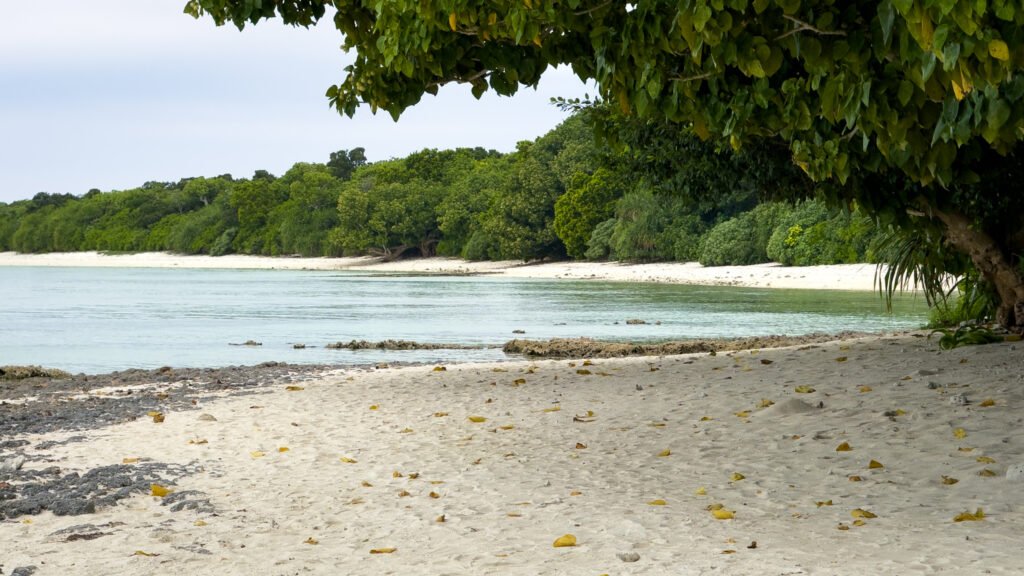
We cycled back to the village to return the bikes and wrapped up the tour with a handmade ice cream at Kanifu. Then we caught the ferry back to Ishigaki, with full hearts and cameras full of photos.
Back in Ishigaki, we headed to the Misaki Street area, one of the liveliest parts of the city. Packed with izakayas (Japanese bars with snacks and drinks), it’s the perfect place to end the day on a high note.


The night before, we had noticed that places fill up fast, so we chose the restaurant as soon as we arrived. It didn’t take much thought — any choice there is a safe bet — and we ended up picking 石垣島バル SUKSMA. With some local snacks and a refreshing drink, it was the perfect way to end a day full of discoveries.
Day 3 – Exploring Ishigaki City (even in the rain)
We had reserved this day to explore Ishigaki City. We already knew rain was coming, so we adapted our plan: no beaches or hiking trails — instead, we would make the most of what the city had to offer… preferably under a roof!
We started the morning at Euglena Mall, a shopping area with two covered streets, perfect for strolling without getting wet. These streets connect to the Ishigaki Public Market, where you can find a bit of everything — from local souvenirs to snacks and regional products. It’s worth taking your time to explore, browse the stalls, and pop into a few shops.

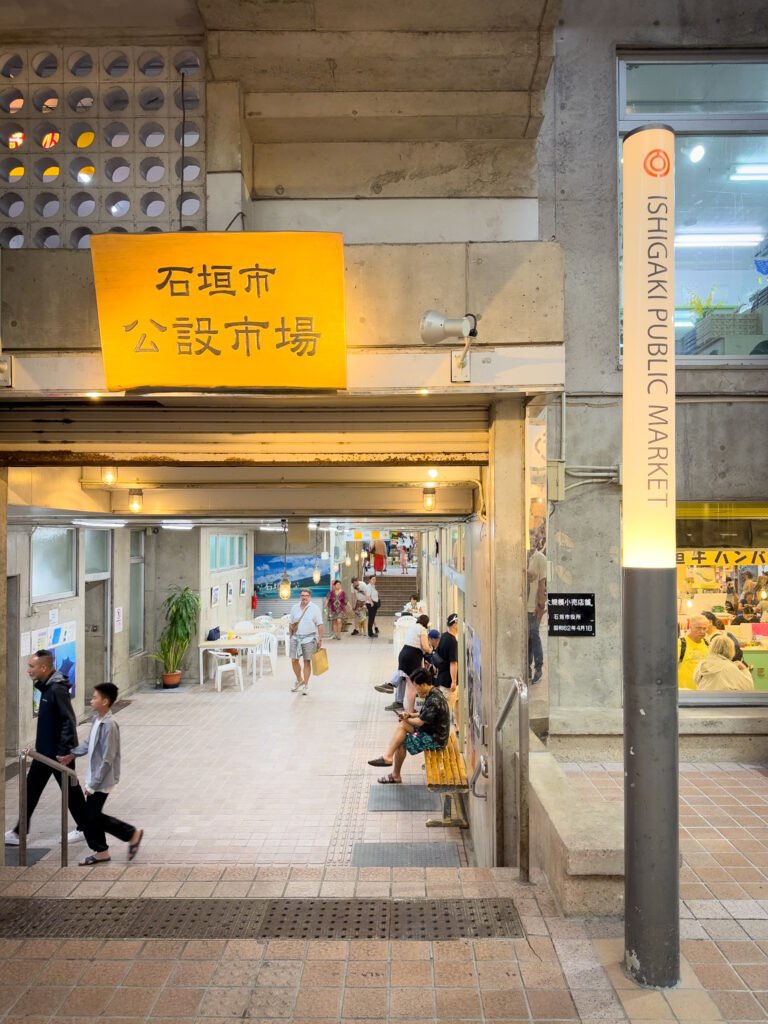
When we got hungry, we had lunch at 石垣島キッズ (Ishigaki Island Kids), a typical Japanese restaurant with English menus and various “lunch set” options. The food was tasty, well-served, and very reasonably priced — perfect for anyone wanting a good meal without spending too much.


But we didn’t stop there. We had already seen some super fluffy Japanese pancakes (yes, the “soufflé” style) at the public market and couldn’t resist: we went back to try them. There’s a line, yes, and it might take a little while… but trust me, it’s totally worth it.
With the rain continuing, we decided to take the bus to Don Quijote, a huge all-in-one store a little outside the city center. The great thing is that the bus stops right at the door, and since we needed to buy a few things, we took the opportunity to explore inside — it’s a great place to get lost among Japanese snacks, souvenirs, and all kinds of quirky stuff.

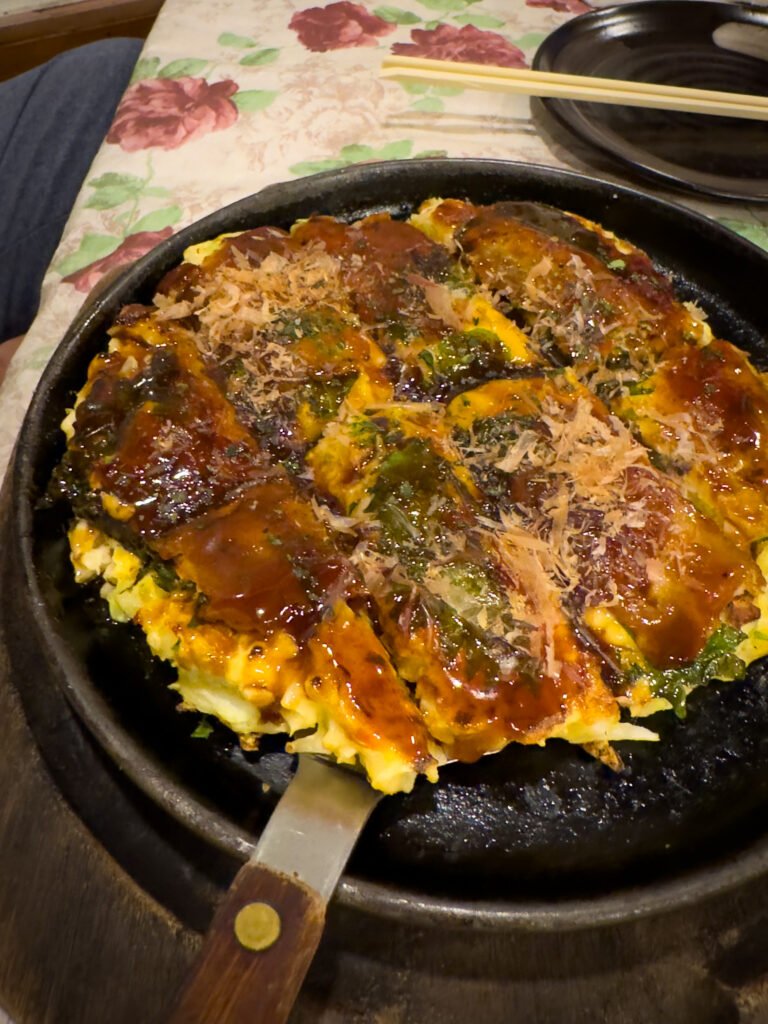
At night, we wanted a more traditional experience, so we went looking for a place to have okonomiyaki, a kind of savory Japanese pancake. We ended up choosing the restaurant Maruju, which specializes in this dish. The menu was all in Japanese, but Google Translate saved us. We ordered two options that were highlighted as recommendations and… what a flavor bomb! The best part was sitting at the counter, watching the owner prepare everything on the teppanyaki — the technique, the sound, the smell… all of it made the experience even more authentic.
If you’re in Ishigaki on a rainy day, this itinerary is a great way to make the most of it without getting soaked — with local culture, good food, and different experiences. Because traveling isn’t just about postcard landscapes, it’s also about adapting to the moment and finding beauty in the unexpected.
Day 4 – Hateruma (but it didn’t happen)
This was the day we had planned to go to Hateruma, the southernmost inhabited island in Japan, known for its white sandy beaches and starry skies, considered the most beautiful in the country. It was one of the moments we were most looking forward to on this trip, but the weather had other plans: the forecast was for rain and some wind. The day before, we decided to cancel the boat trip and take the opportunity to rest and explore the city at a leisurely pace.
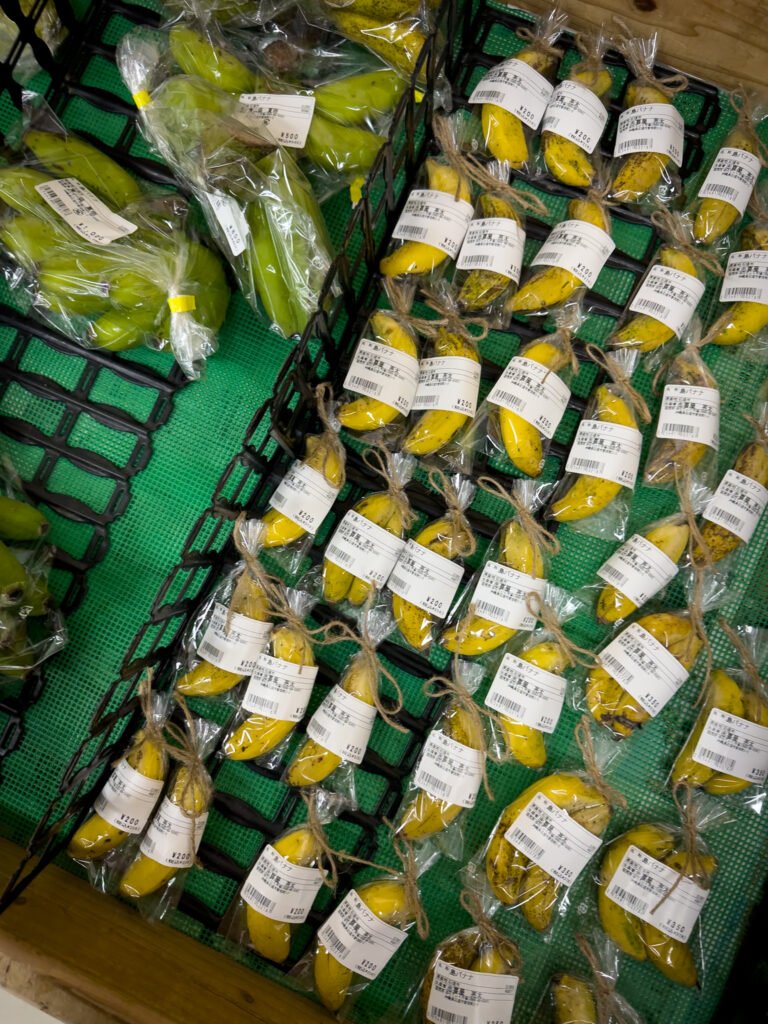
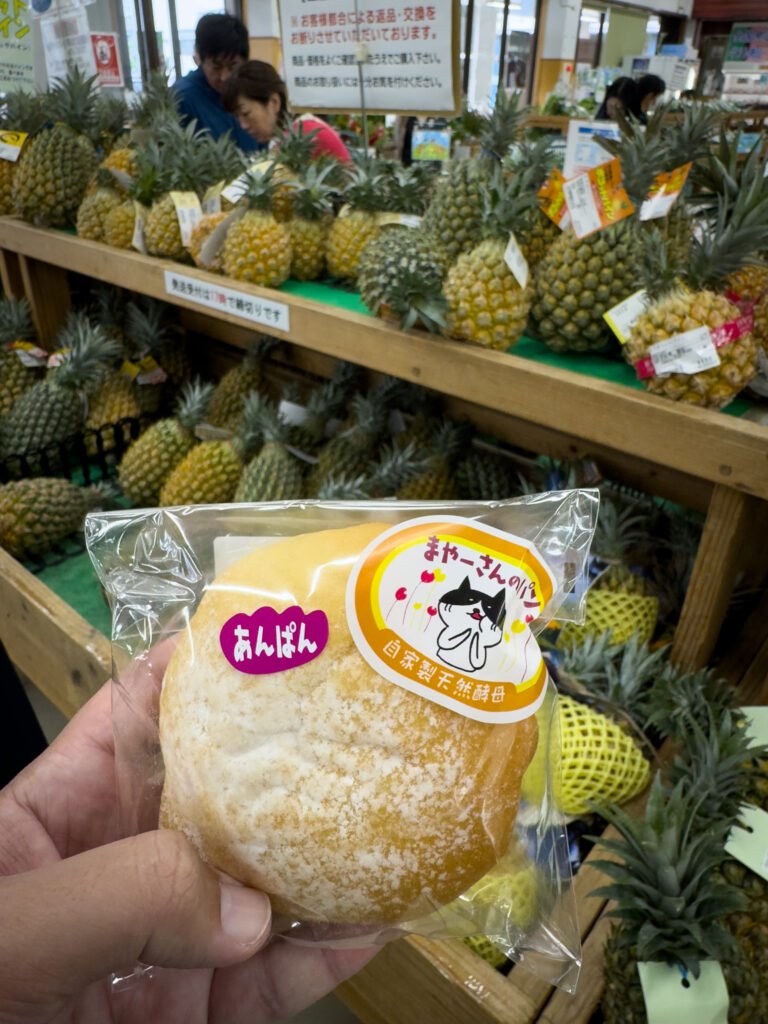
In the morning, we went to Yurateiku Market. It’s not your typical tourist market — it’s more like a local supermarket, the kind where you can really feel the island’s true rhythm. Everything sold there is from the region: fresh tropical fruits, homemade sweets, artisanal sauces, purple sweet potato snacks, and seaweed. It’s about a 10-minute walk from the center of Ishigaki, and it’s perfect for those like us who love discovering authentic markets. While we were there, we tried a sweet bun filled with red bean paste that was absolutely delicious.
Next, we took a stroll around the Remote Islands Port area, where boats depart for the small islands around Ishigaki. Feeling the port’s buzz, watching the boats come and go, was a way for us to dive even deeper into the local life.


For lunch, we decided to try one of the island’s specialties: Ishigaki beef. We went to HEART LAND and ordered a burger made with this tender and flavorful meat. It was worth every bite!
In the afternoon, we planned to relax at the hotel, but before that, we made a mandatory stop to try one of Okinawa’s most famous treats: the purple sweet potato tarts from the Okashigoten Ishigaki Store. They say these are one of the secrets to the longevity of the locals, who often live to be 100 years old with great health — and after trying them, we could totally see why!


At night, we went for sushi at a small, super local restaurant that won us over: Masaharu Sushi. No frills, but with super fresh fish and such a cozy atmosphere that we immediately felt at home.
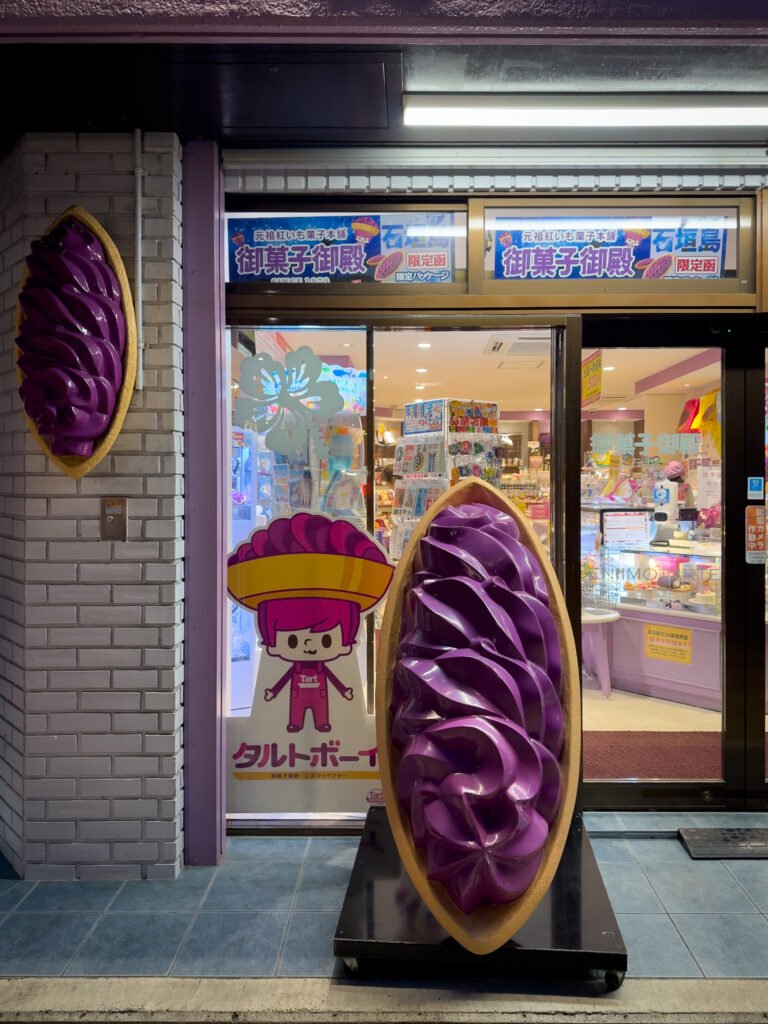

We ended the night on a sweet note, with the famous bottle puddings from Genki Milk Store. Made with fresh island milk, they are so light and tasty that it was impossible to resist.
Day 5 – Road trip with a rental car in Ishigaki
We started the day by picking up the car we had reserved from a local rent-a-car. It was the beginning of Golden Week, and neither Klook nor DiscoverCars had any cars available, so we had to go with a more traditional option — and it went smoothly.
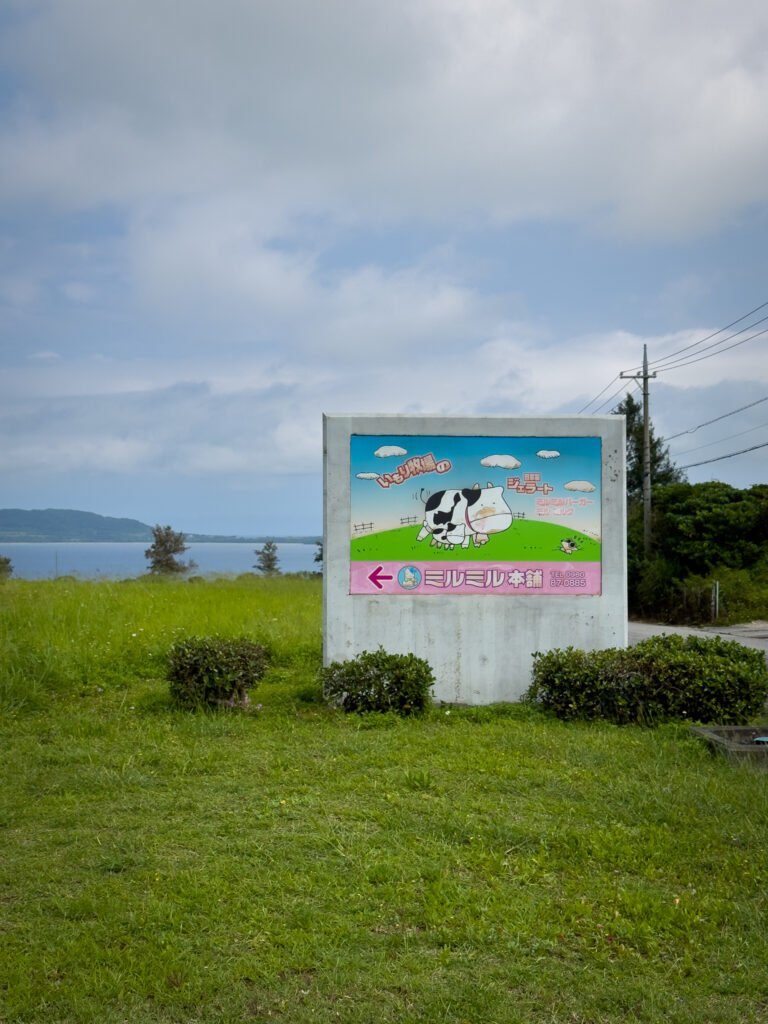
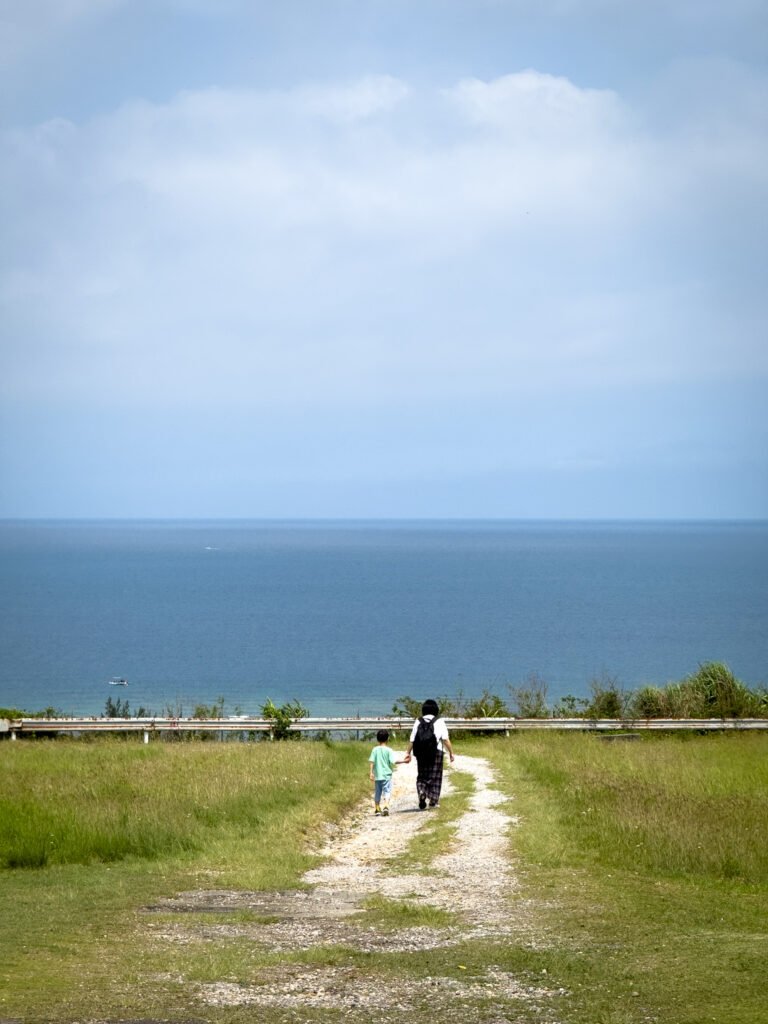
The first stop was, curiously, a souvenir shop — Mirumiru Hompo Honten. But we didn’t go there for the souvenirs. We were hunting for the famous artisanal ice creams of Ishigaki! If you go, try the salt and brown sugar or black sesame — they are absolutely unmissable. Plus, the shop has an amazing view over Fusaki Beach, one of the recommended beaches if you’re looking for a place to stay in Ishigaki.
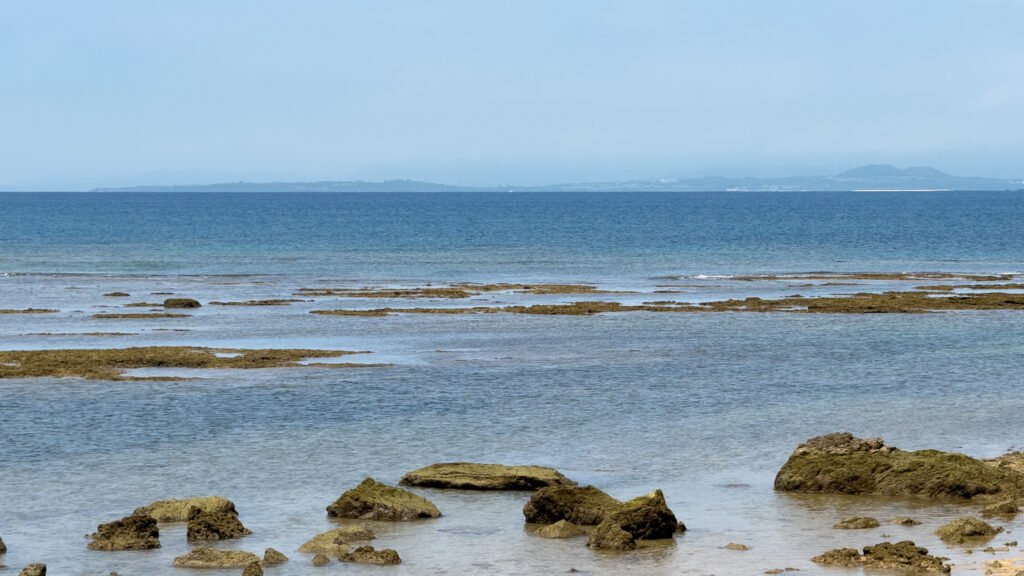
We then headed to see Fusaki Beach itself. Access is mostly reserved for hotel guests in the area, but there’s a small viewpoint open to the public, called Kannonzaki Rest Area. It’s definitely worth stopping by, even if just for the view.
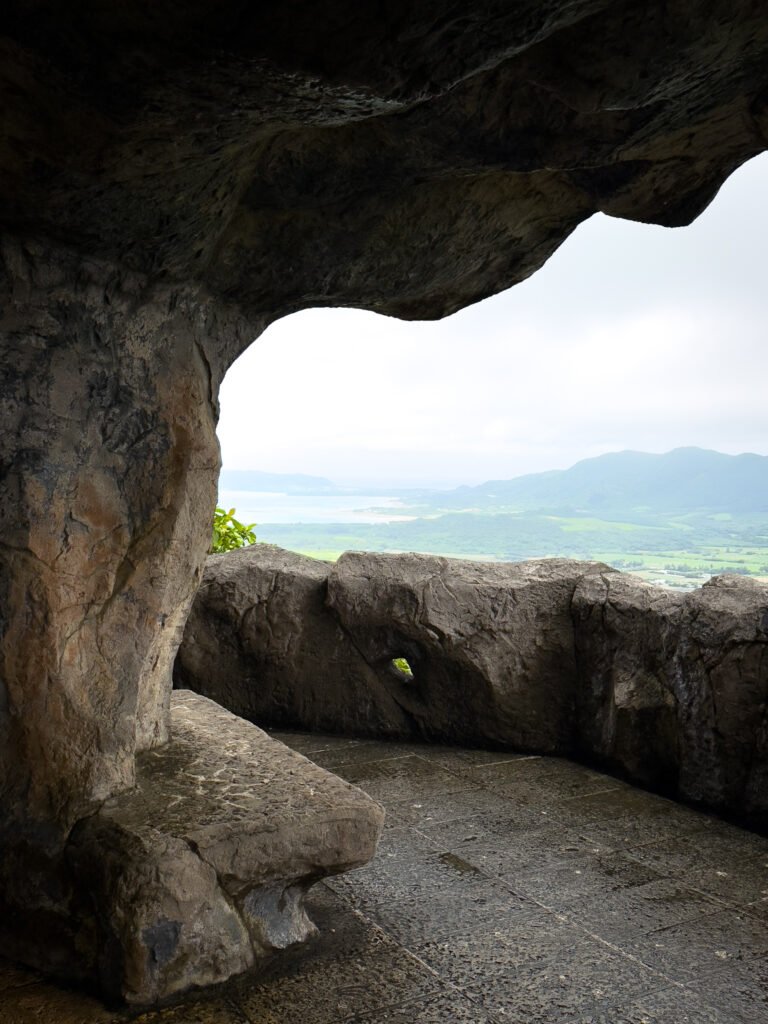

We got back on the road and headed to one of the most beautiful observation points on the island: the Observation Deck on the Southern Island. From there, the view over the south of Ishigaki is breathtaking — and if you look the other way, you can also see incredible panoramas. Just a few minutes away, we also visited the Migratory Bird Observation Tower, an egg-shaped building. The views are similar to those from the previous deck, but the space is so unique and interesting that it’s worth the stop.

The road continued to one of the island’s most iconic spots: Kabira Bay. This is one of the few places in Japan that has been awarded 3 stars in the Michelin Guide for natural attractions — and as soon as we arrived, we understood why. The water is incredibly clear, with shades of blue that change with the light. It’s definitely one of the most beautiful bays we’ve ever seen.
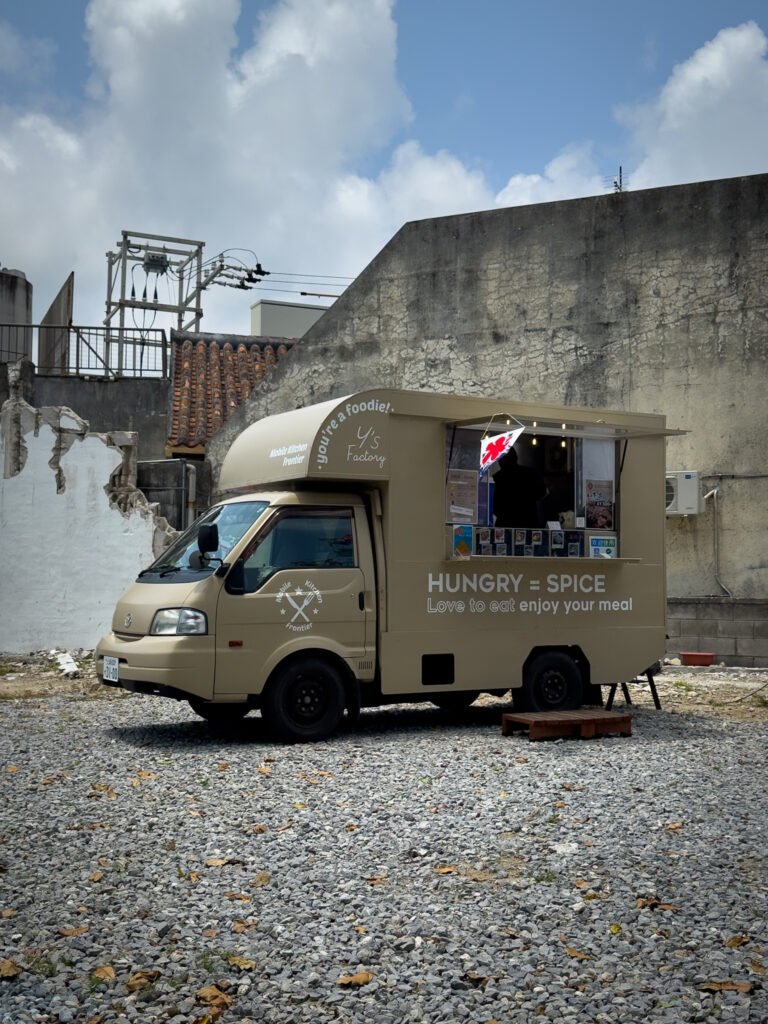

We had lunch right there, at a food truck by the bay. We couldn’t leave without trying the traditional Okinawa donuts — light, tasty, and perfect to recharge our energy.

Next, we visited Yoneko Yaki Kobo Shisa Farm, a unique place full of shisa statues, mythological figures that protect houses and temples in Okinawa. It’s a fun, colorful spot, ideal for those who love folk art and local traditions.
As the day went on, we tried to visit Sunset Beach, but the parking lot cost 500 yen. Since we weren’t going to the beach or staying long, we decided to move on. A few minutes later, we found a place where we could park the car and take a walk around the area.

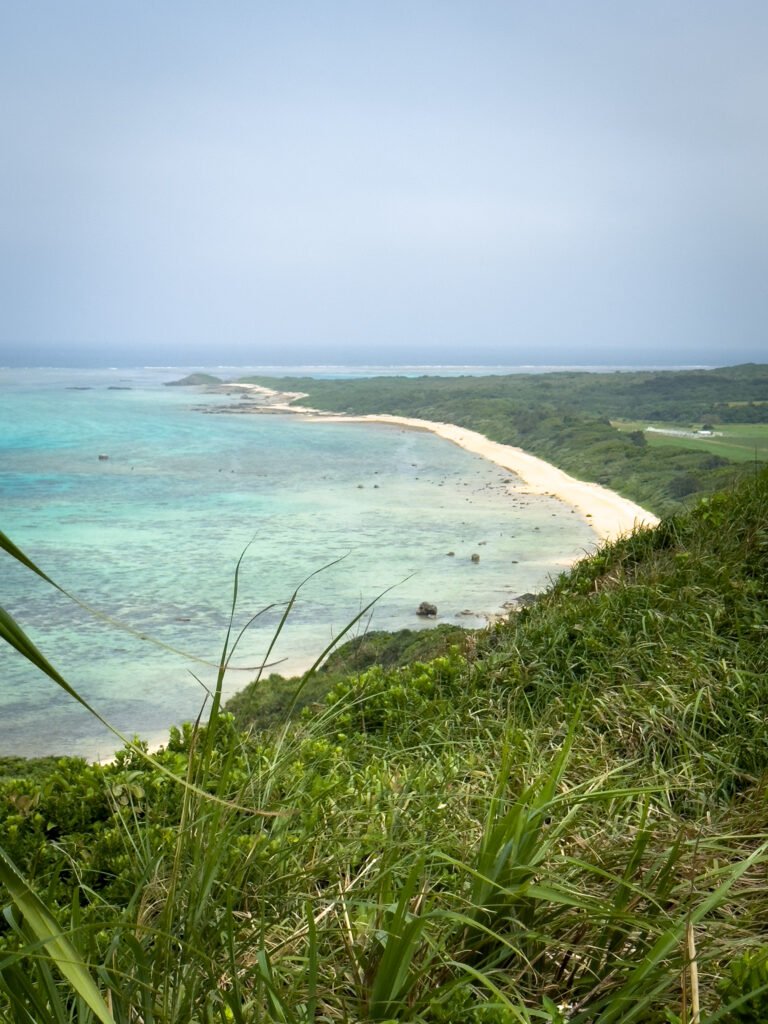
We continued to the northern tip of the island to visit the Hirakubozaki Lighthouse. The panoramic view of the sea and lush ravines is absolutely breathtaking. Further on, we stopped at the Tamatorizaki Observation Platform, another viewpoint with stunning views. From here, you can see the coastline’s outline and even watch the waves breaking in patterns on the sea.

We finished our road trip around the island with a stop at the Don Quijote store in the city (ideal for last-minute shopping), and then we returned the car.
Throughout this drive around Ishigaki, we were surrounded by lush landscapes, incredible viewpoints, and an intensely blue sea. If you’re wondering whether it’s worth renting a car to explore the island, we can tell you without hesitation: it’s totally worth it.

At night, we toasted to adventure at a typical izakaya in the city – オイスター&島料理 Happy’s, between snacks and smiles. The next day, we caught the flight to Osaka, ready to continue our journey through Japan.
Tips for exploring Ishigaki
- Renting a car: Renting a car is essential to explore Ishigaki freely. We booked through Klook and DiscoverCars, and everything went smoothly. If you’re staying in the city center, you can do a lot on foot, but to discover remote beaches and viewpoints, you’ll definitely need a car.
- Travel insurance: Traveling with peace of mind makes all the difference. We use Heymondo, which is easy to activate and covers medical expenses and unexpected situations without hassle.
- Mobile internet: For this trip, we opted for Holafly. We bought the eSIM before leaving home and arrived in Ishigaki already with unlimited internet, stress-free.
- Booking restaurants: Many typical restaurants, especially small izakayas, require reservations, especially during peak season. Try to book online or, if you prefer, stop by in person during the day to secure a spot for dinner.
- Boat tours: Spots for visiting nearby islands sell out quickly. If you want to do a boat tour, book in advance to avoid missing out.
- Trash bins: In Ishigaki, finding trash bins is even harder than in the rest of Japan. This is because there is a strong emphasis on cleanliness, and trash is usually the responsibility of the person who generates it. Always carry a small bag to hold your trash until you get back to the hotel.
FAQs – Frequently Asked Questions
Is it worth visiting Ishigaki?
Yes! Ishigaki is an amazing island in the south of Japan, with paradisiacal beaches, untouched nature, and a relaxed atmosphere. Additionally, it serves as the perfect base to explore other islands in the Yaeyama archipelago.
Do I need to rent a car in Ishigaki?
If you want to explore the more isolated beaches and the best viewpoints on the island, renting a car is highly recommended. Public transportation is limited and doesn’t reach many places.
How many days should I stay in Ishigaki?
We recommend at least 4 to 5 days to fully enjoy Ishigaki, including time to visit other nearby islands like Taketomi or Iriomote.
Which islands can I visit by boat from Ishigaki?
From Ishigaki, you can visit Taketomi, Iriomote, Kohama, and Hateruma. Each one offers unique experiences, from traditional villages to wild nature and deserted beaches.
How do I get from Ishigaki Airport to the city center?
You can take a bus (the most economical option), a taxi, or use the Didi app (similar to Uber). We chose the bus for convenience and price.
What to do on a rainy day in Ishigaki?
On rainy days, take the opportunity to explore Euglena Mall, the Ishigaki Public Market, the Don Quijote store, and try local cuisine, such as okonomiyaki and soufflé-style pancakes.



